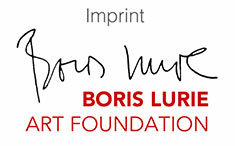Harold Rosenberg (1974)
Published in: Lurie, Boris; Krim, Seymour: NO!art, Cologne 1988
One gets sick of “radical” artists who produce innocuous collages of silk—screened newspaper clippings-scare headlines, electric chairs, corpses—and imagine they are striking a blow at society. All that they are saying is that they read the papers, tabloids by preference, and have found ways of making use of them for art. It’s not really very radical to be aware that two Kennedys were assassinated and that Marilyn Monroe had an appealing mouth. Perhaps this art feels heroic because it has subjected itself to such low-grade information instead of meditating on the continuity of the picture plane and the plangent discovery that paint comes in colours.
Genuine perception of social reality and accompanying grim feelings don’t go down well with critics, curators and collectors, who seek, above all, peaceful enjoyment of art treasures—and thus the “unbroken continuity” not only of the picture plane but of the art market and of works of today with the masterpieces of the past. What is the contemporary art world but the collusion among its parts to turn art into a Sunday Section of life untroubled by the news of the week?
The measure of vanguard art is
1. the degree of heat it registers in its criticism of society and culture;
2. the centrality of the target to which this criticism is applied.
I think NO!art does well with 1, less well with 2. (Incidentally, I think NO!art is a bad title, because it gives the impression of meaning “without art”, whereas its better meaning is nay-saying or negative art.) In the temperature of their reaction against contemporary America, the NO! Artists were the legitimate heirs of Dada, though without the old boys’ slapstick ferocity. At any rate, they showed a natural enmity to cool, slick Pop and post-Dada Rauschenberg, Lichtenstein and other housetrained kittens.
It is not easy for an artist to be constantly negative. After all, one becomes an artist through a burst of admiration for a work of art. To say No to art through art requires, first of all, that one say No to that transforming experience. I am talking about slaying a god-or an angel, god’s messenger. If anything less is involved in NO!art, it is simply non-art, and modern society is full of that.
On the other hand, unless the NOI is absolute—principled and non-compromising as a religious or political oath—it becomes automatically a device for smuggling in a style of painting through propaganda about social attitudes.
Lurie, Goodman, Fisher et al smothered their aesthetic angel under a garbage heap of media images belonging to the categories of violence and sex fantasy. They anticipated Documenta V by ten years—it is no wonder NO!art is doing well in the land of an international exhibition conducted under the slogan art is superfluous and of Joseph Beuys. Lurie said in one of his statements that he couldn’t get mass-distributed pictures of big tits and behinds of bent-over girls out of his head until he emptied them into his collages. The organic goodies that happen to be packaged in the human female kept at fever heat his hostility to society that has learned to satisfy mass market demands for anything but genuine ass—it can, on a national basis, supply only ersatz (the Pin-ups), leaving actual toplessness and price-fixed fondling to be controlled by local ordinances. You don’t have to be tit-hungry to like Levy’s, and to appreciate why Goodman and Lurie were sore.
The NO!artists had the advantage of a self-fueled loathing. The next question is, how good was their choice of targets? Primarily, I think, their target turns out to be not society but the art world. And the art world can only go down the drain when society does. NOI Art features pinups, a kind of art, according to Lurie’s testimony, capable of becoming an obsession. From pinups NO!art advances to excrement, exhibited in anticipation of anti-form sculpture.
Where’s the radical criticism? In the exhibits themselves, I mean, not in the accompanying manifestos? Naked girls are at home on the walls of art galleries, and to exhibit them as scandalous, with or without garter belts, in cut-outs from porno magazines is to imply that they ought to be denied to the poor and uneducated.
Shit is not a radical phenomenon either—Rabelais wrote a poem in praise of it as a factor in the humanist revolution. So the NO! message boils down to the assertion that while pornography and shit are facts of life they have not hitherto been found in art galleries. But a lot worse things are prevalent in galleries and are considered highly respectable. To deal in masterpieces as if they were diamond-studded shit is more culturally destructive than to exhibit shit as If it were a diamond-studded masterpiece.
NO!art reflects the mixture of crap and crime with which the mass media floods the mind of our time. It attacks this mixture through reproducing it in concentrated images. It is Pop with venom added. I think its greatest value is to remind the art world that there are things to be uncomfortable about, whereas Pop glad-handed Madison Avenue as if it were looking for campaign funds. Granted that people flee unpleasant reminders, especially when there’s nothing they can do to change the situation, art can only answer, let them. It’s not the business of art to get things done but to keep reality on the agenda. Art has been apoliticized since the war not because artists chose to shun politics but because they found a genuine artist can only do what he can do, not what he thinks ought to be done.
Besides, politics itself has abandoned all hope for a better world. Individuals can shriek, but no one knows what to do. Art by itself can do nothing to change the general conditions of life. And if art merely shrieks it is accused of abandoning art for bad politics. Did NO!art do that? Did it ask what is good art for in the world today? A “Swiss Investment Group?” A “Japanese-American Group—highest prices paid?”
NO!art fixed itself in the reality defined by the self-destructive New Left of the early sixties. It accepted the letter’s package of things to attack: tyranny, filth and aesthetic hypocrisy, but it could not offer any contributions toward a new political consciousness or a rebellious sensibility. All the March Gallery could do was to make noise to drive away evil spirits. And to take the bull by the horns, at the risk of getting dragged in the dirt.
Some Questions as Appendix:
1. Will NO!art be co-opted by art history?
2. Does it seek co-option?
3. Will shit multiples be produced by Marlboro, Pace and Castelli to comInforate this episode of art history?
4. Will a retrospective shit show be sponsored by the National Endowment for the Arts and the New York State Council for the Arts?
5. If not, is the omission a falsification of art history?
6. What about other artists who have existed but have been omitted from art history?

